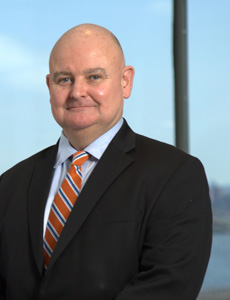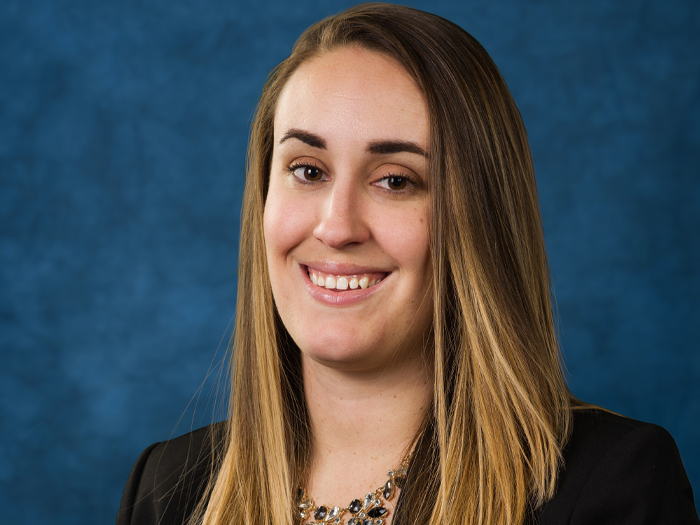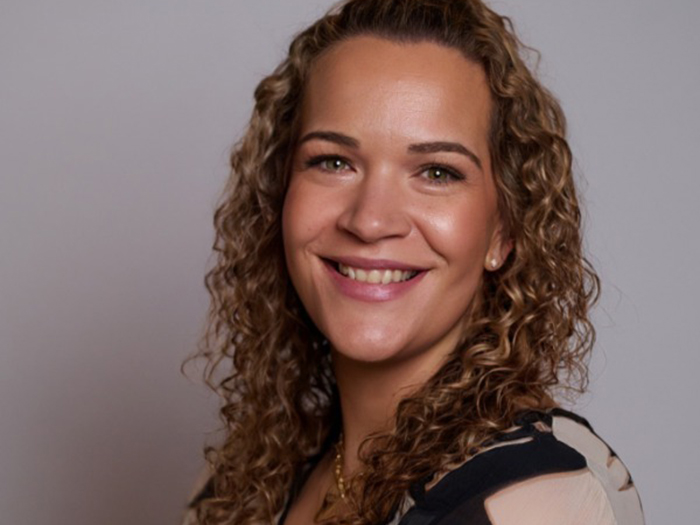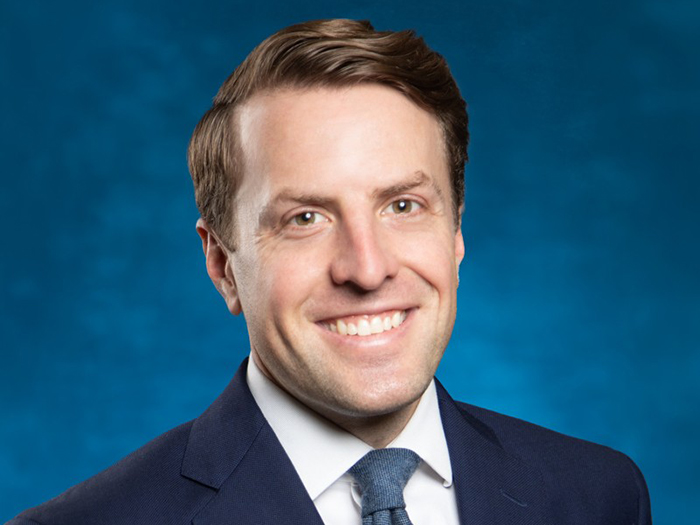Risk Manager Focus
Longtime Risk Manager Janice Ochenkowski Talks to Kevin Maloney of Allied World

As Janice Ochenkowski heads into retirement after 37 years running the risk management team at Jones Lang LaSalle, her risk management partners at Allied World wanted to congratulate her and seek to gain some additional wisdom and insight from an industry leader.
Janice served most recently as the International Director of Global Risk Management at Jones Lang LaSalle, the global commercial real estate and investment company. Headquartered in Chicago, Janice and her team helped manage risk for 70,000-plus employees operating in 80 countries across the globe.
Janice is a regular as an expert panelist at several of the most prestigious real estate insurance industry forums and conferences each year. She is a previous recipient of the Harry & Dorothy Goodell Award and serves as a co-chair of the Board of Trustees at Cardinal Stritch University.
Ms. Ochenkowski was interviewed for this piece by Kevin Maloney, a Senior Vice President, Real Estate and Financial Institutions Practice Leader for Allied World.
Janice, in 37 years in risk management at Jones Lang LaSalle, what are some of the biggest changes that you have seen in the field of risk management?
When I began in risk management at JLL in 1980, the discipline of risk management was evolving from an insurance purchasing department to risk assessment and management. As that evolution continued, the role of risk management in corporations and institutions evolved too, so that at its best, risk management is a valued resource within the organization.
Insurance companies and brokers have changed too, as the discipline changed. Each is more willing to work with risk managers in a collaborative fashion. When I started in the industry, most brokers were reluctant to have risk managers meet with underwriters, and underwriters did not welcome direct contact by risk managers. Today there is far more collaboration and transparency within the industry with brokers, insurers and risk managers forming partnerships and approaching issues as a team, rather than as separate entities.
These are only a couple of examples, but risk management has evolved dramatically in many ways and those changes have made their organizations and the insurance industry better.
You have been out in front leading the industry on the importance of ERM – Enterprise Risk Management. How important is ERM? What role do you see ERM playing in major corporations going forward, given Sarbanes Oxley and the ongoing focus on corporate responsibility at all levels?
ERM is a critical component of any risk management program. At its core, ERM is simply a holistic view of the risks of a company. The risk assessment includes identifying the upside and downside of an issue and a review of options regarding the best way to manage the risk or opportunity. The way that an organization does that assessment and the conclusions they draw will vary from entity to entity.
At JLL, ERM is done by the Global Operating Board because of the assumption that the stakeholders that comprised the group could together assess the risks and implement the best management technique. Our view was that no one individual had all the expertise necessary to properly analyze and evaluate a risk or opportunity.
The model worked well within the collaborative and somewhat entrepreneurial environment of JLL. There are other models used successfully by organizations; the key is that the structure and process should fit into the organization’s operational and management style.
You may be a junior analyst or a claim administrator, but you should understand what your organization does, how it makes money or what its service objectives are, who its major competitors are, and the emerging issues that will or could impact it.
What role has technology played in bettering our industry and helping to take it to the next level? What changes have you seen in that regard? Where do you see it going in the future?
Technology has played a huge role in all industries including the risk managers’ organizations and the insurance industry. Those changes have dramatically affected the way in which we conduct business.
For the insurance industry and the insurance process, including policy purchase and claims, communication is streamlined and the information flow is more efficient. Each part of the insurance purchase process has improved significantly with technology and as new technologies continue to be developed, that efficiency and effectiveness can only improve.
The administrative aspects of the insurance industry have needed the most innovation, as they traditionally have been tedious and costly. The inherent inefficiency in their operation bog down the operational efficiency of the clients the industry serves.
Issuing insurance policies, certificates of insurance, loss runs, claim data, allocations and invoicing — each is a critical component that can be administratively burdensome, yet critically important to the smooth operation of a plant, construction site or real estate transaction.
There have been dramatic improvements in the processes since I began. But frankly, further improvement is needed.
Data management is the next frontier — all insurers and brokers are working on strategies to use data to make their operations more efficient and to better understand their markets and clients.
There are, of course, parallels to the risk managers’ organizations. Efficient data collection — and, more importantly, analysis — is becoming more readily available, thus enhancing the information flow to insurers. Improved communication streams allow for the effective transmission of claim and loss information.
What role has diversity in the workplace played in bettering our industry and helping to take it to the next level? What changes have you seen in that regard? Where do you see it going in the future?
Well, in 1980 I was generally one of the only women in the room. Thankfully that’s changed. However, we haven’t seen the same speed of improvement in racial and other diversity. I can only hope that at some time in the hopefully near future, organizations will hire, retain and promote individuals based solely on merit — and questions regarding diversity and inclusion will be viewed as “old-fashioned.”
What do you see as the biggest challenges to our industry at present and going forward?
The biggest challenge for the insurance industry is innovation. The insurance industry needs to innovate in the same way that its clients are innovating. Insurers and brokers need to forget about how “it’s always been done” and think about how advances in technology can be used to identify, mitigate and create solutions for their clients.
Hearing about disruption to existing systems and processes is almost a cliché today, but it is a reality. Unless the insurance industry adapts to new processes and systems, it will be challenged to remain viable and profitable.
What advice would you give a young professional just starting out in the field of risk management?
I’ll begin by saying that this is a fantastic time to be starting in risk management! Risk management is a mature discipline and its necessity and contributions are well established within organizations. However, once you begin in the field, there are a couple of critical things to keep in mind — no matter what level or position you hold.
It’s also critical to be flexible when working with internal groups. Risk managers too often take a rigid stance on risk rather than a strategic or operational view. Be the problem solver within your organization.
The first is to always know and understand the business of your business, whether it’s a corporation, public entity or government.
You may be a junior analyst or a claim administrator, but you should understand what your organization does, how it makes money or what its service objectives are, who its major competitors are, and the emerging issues that will or could impact it.

Kevin Maloney, Senior Vice President, Real Estate and Financial Institutions Practice Leader for Allied World
Also, while your main responsibility may be to buy insurance, within your organization you should not align yourself as part of the insurance industry; you are part of your organization’s business.
However, you do have to understand the insurance products and services that are suited for your risks with all their nuances — only in that way can you be a discriminating insurance buyer.
I’ve always viewed the role as a kind of translator – explaining my business operations and risks to the insurers and brokers and then translating the insurance jargon back to our business teams using their language.
It’s also critical to be flexible when working with internal groups. Risk managers too often take a rigid stance on risk rather than a strategic or operational view. Be the problem solver within your organization.
Understand the risks, but also understand that taking that risk can have significant upside potential for your organization. Help them to find a way to take the risk while not risking it all. If you can do that, you’ll be seen as a valued team player and the person that business groups will want to talk to when they’re faced with a problem.
If you view your role as a “gatekeeper” against risk, business groups won’t bring problems to you — they’ll tell you what they’ve done after the fact.
Become involved in your organization’s industry groups and with RIMS. I’ve participated in various real estate associations and risk forums.
For me personally, RIMS was a fantastic opportunity to learn leadership and management skills without directly sabotaging my career. Throughout my career, I developed relationships with the risk managers of our competitors and others in the real estate and financial services industry, as well as with our clients, vendors and contractors.
RIMS offers plenty of opportunities to meet senior insurance industry leaders. Take those opportunities — because at JLL, when I could offer my contacts as resources to management or business groups when they needed insights or information, they viewed me as a key resource, and I became an important part of the business team.
None of this is easy — none of it is done quickly — it’s the work of a career. But it’s extremely rewarding and can help you to move forward in your career.
Finally, I do have to speak about ethics and integrity, which I view as critical to any career. A risk manager has the responsibility to be honest with their brokers, underwriters and claim professionals. You may get away with providing bad underwriting data, failing to fully report, and omitting key claim facts for a while, but not for long.
Dishonesty when dealing with peers, clients, vendors and contractors can have long-term repercussions for your career and your organization. The world of insurance and risk management is a relatively small one and today’s broker is tomorrow’s underwriter and next month’s client. Your reputations will move with that person and getting clear of a bad view is a very difficult task.
Concluding thoughts?
If you asked me to look into a crystal ball 37 years ago, I could never have imagined the fantastic opportunities and experiences I’ve enjoyed as JLL’s risk manager.
At JLL I traveled globally, met our clients and JLL colleagues and was promoted to the highest level within the company. Serving as RIMS President, I testified to the U.S. Congress and spoke at forums throughout the world. I have to admit, 37 years ago even my dreams weren’t that grand.
But throughout those years and experiences, I’ve been fortunate to work with and develop friendships with amazing people and it’s those friendships and experiences whose memories will be with me through my retirement. I’m so very grateful for the opportunities that my career has provided. &










